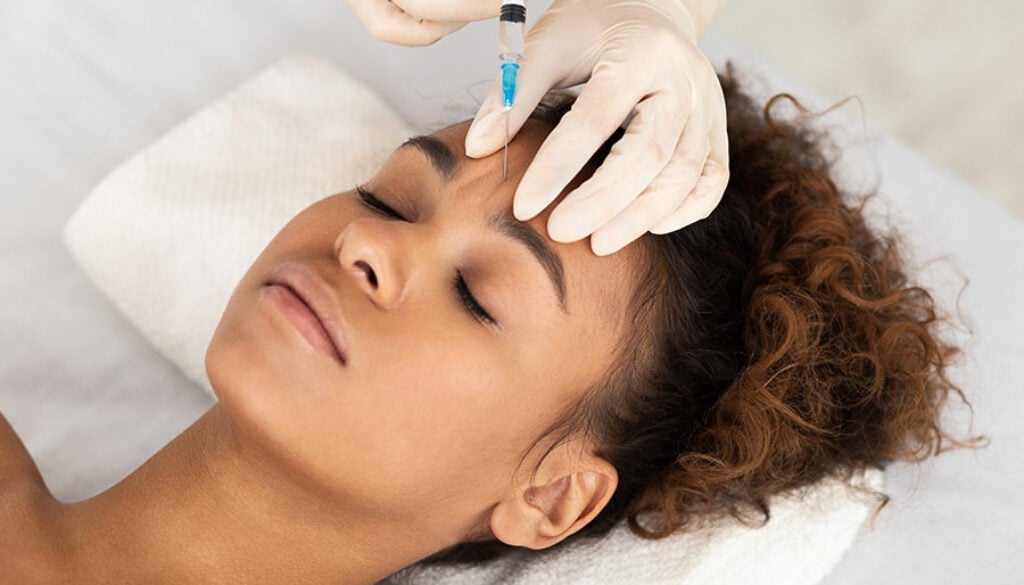Botox is a go-to solution for anyone looking to smooth out dynamic wrinkles, refresh their appearance, or even prevent fine lines from forming. As one of the most requested aesthetic treatments worldwide, Botox injections in Riyadh are growing in popularity among individuals who want subtle, effective, and non-invasive results. But once you’ve had your first treatment, an important question arises: how often should you actually get Botox?
Let’s explore expert insights, timelines, and tips to help you plan your Botox treatments like a pro.
Understanding How Botox Works:
To figure out how often you should get Botox, it’s important to understand how it functions. Botox is a purified neurotoxin that temporarily blocks nerve signals to targeted muscles, preventing them from contracting. This results in relaxed facial expressions and reduced wrinkle visibility.
Most common treatment areas include:
- Forehead lines
- Frown lines (between the eyebrows)
- Crow’s feet (around the eyes)
- Bunny lines (on the sides of the nose)
- Chin dimples and neck bands
While results are highly effective, they aren’t permanent—Botox wears off gradually, which is why a maintenance schedule is key.
Typical Duration of Botox Results:
One of the main reasons people love Botox is because of its temporary yet consistent results. Most clients notice the effects begin to fade after a few months, depending on several individual factors.
General Botox timeline:
- Onset: 3 to 5 days post-injection
- Full results: 7 to 14 days
- Duration: 3 to 4 months on average
- Touch-up timing: Every 12 to 16 weeks recommended
Some patients may enjoy longer-lasting results, especially after repeated treatments that train the muscles to relax more efficiently over time.
Factors That Influence Botox Longevity:
While Botox generally lasts 3–4 months, it can vary based on lifestyle, muscle activity, and treatment area. Knowing what influences your results can help you determine a more accurate schedule.
Key factors that impact duration:
- Muscle strength: Stronger facial muscles may metabolize Botox faster
- Metabolism rate: Faster metabolisms break down the product more quickly
- Dosage used: Lower doses may wear off sooner
- Injection technique: Precise placement by a skilled provider ensures longevity
- First-time users: May find that results fade a bit faster initially
- Skincare routine & sun protection: Can help prolong your smooth look
This is why it’s important to work with a provider who can evaluate your unique facial anatomy and create a personalized plan.
How Often Should You Schedule Treatments:
There’s no one-size-fits-all answer, but most clients fall into a routine of getting Botox every 3 to 4 months. This schedule allows for consistently smooth results without letting wrinkles fully return.
Expert guidelines:
- For consistent results: Every 12–16 weeks
- For preventative care: Every 4–6 months
- For occasional use: Once or twice a year, depending on goals
It’s important not to wait too long between treatments, as allowing full muscle activity to return can make it harder to maintain a relaxed appearance.
Can You Get Botox Too Often:
Yes—spacing matters. While Botox is safe, overdoing it can lead to resistance or a “frozen” look if not carefully managed.
Signs you may be overdoing Botox:
- Lack of facial movement even at rest
- Droopy or heavy eyebrows
- Uneven expressions
- Needing more product with less effect over time
That’s why it’s crucial to follow your provider’s guidance and avoid early or unnecessary top-ups.
How Your Routine May Change Over Time:
Many people find that with regular Botox treatments, their muscles become trained to stay relaxed, meaning they may need fewer units or less frequent sessions over time.
What to expect long-term:
- Reduced wrinkle depth
- Longer-lasting results with consistent use
- Slower return of full muscle movement
- Lower dosage requirements in some cases
Your provider may adjust your treatment plan as your muscles adapt, ensuring natural-looking results that evolve with your facial structure and lifestyle.
When to Consider a Touch-Up:
Sometimes, subtle tweaks are needed between full sessions. A touch-up is usually done around 2 to 3 weeks after the initial treatment, once the full effects have settled.
Reasons for a touch-up:
- Uneven results
- Asymmetry in muscle response
- Missed smaller lines
- Personal preference for stronger effect
Note: Touch-ups are usually minimal and involve fewer units than the initial session.
How to Get the Best Results from Botox:
Consistency is important, but so is caring for your skin between sessions. Supporting your Botox routine with good skincare and lifestyle habits can help you get the most from every treatment.
Pro tips for longer-lasting Botox:
- ✅ Wear SPF daily to prevent sun damage
- ✅ Use medical-grade skincare with retinoids or peptides
- ✅ Stay hydrated and avoid smoking
- ✅ Avoid harsh exfoliants immediately post-treatment
- ✅ Choose experienced professionals for every session
If you’re planning to start Botox injections in Riyadh, look for clinics that offer personalized treatment plans, follow-up support, and expert guidance based on your needs.
Final Thoughts:
Knowing how often to get Botox is about more than just a timeline—it’s about understanding your skin, goals, and the science behind the treatment. While most people benefit from sessions every 3 to 4 months, your ideal frequency depends on how your body responds, the areas being treated, and the skill of your provider.
Whether you’re looking for wrinkle reduction, facial balance, or prevention, Botox injections in Riyadh offer a safe, accessible, and effective solution. With a tailored schedule and the right clinic, you can enjoy smoother skin, natural movement, and long-lasting confidence.

